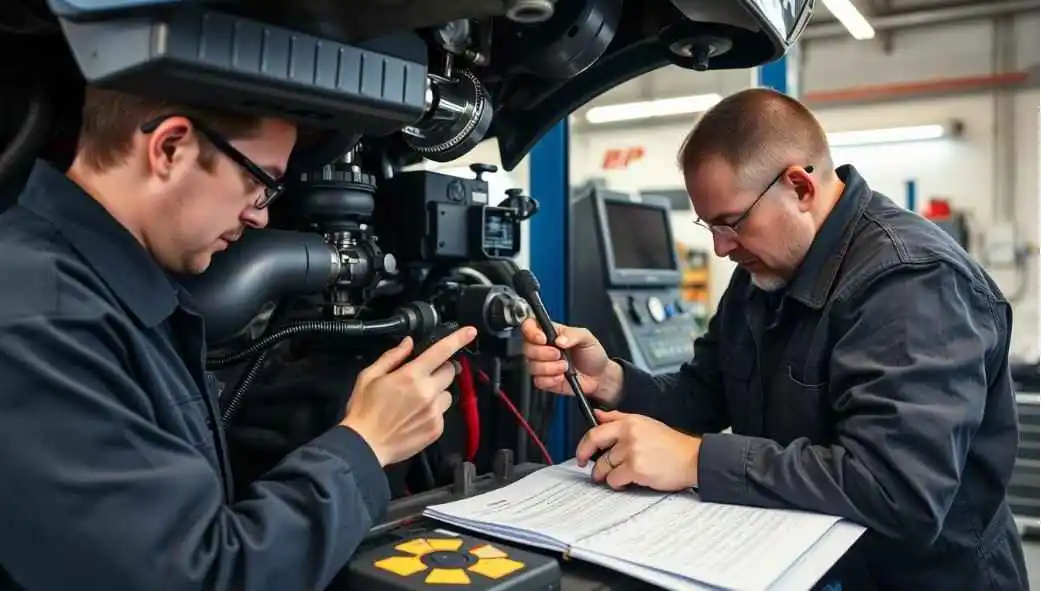Mandatory inspections in India keep your road ready. Learn how safety checks and emissions tests ensure your car and you be safe.
Have you ever thought about what happens during these vehicle inspections that everybody dreads? It is more than simply glancing around. Such inspections are essential in maintaining the vehicles and maintaining their roadworthiness. But what’s the real deal behind them?
They are essential in maintaining road standards. It helps to ensure that vehicles are of national or international specification. The inspections include checking the vehicle’s identification number, brakes and other important parts like steering system, lights and exhaust system. These policies prevent any accidents from happening and endanger the lives of those on the roads.
Key Takeaways
- Mandatory vehicle inspections are essential for maintaining road safety and compliance with regulations.
- These inspections cover a comprehensive range of vehicle systems and components, including identification, brakes, steering, visibility, lighting, and emissions.
- Regular inspections help identify and address issues before they escalate, preventing costly repairs and ensuring the roadworthiness of vehicles.
- Mandatory inspections are a crucial part of an effective road safety program, contributing to the prevention of accidents, injuries, and fatalities.
- Understanding the purpose and process of mandatory vehicle inspections is key to ensuring your vehicle’s compliance and your safety on the road.
Importance of Mandatory Vehicle Inspections

Ensuring Road Safety and Compliance
Mandatory inspections of motor vehicles are important for the safety of traffic and for proper observance of the regulations in the country. They make sure that all safety measures are in place and pollution levels are controlled at the vehicle’s emissions. This has ensured that accidents are few if there are any and everyone who is using the roads goes back home alive.
If companies adhere to safety laws, they can be certain of avoiding surefire penalties and lawsuits in the case of an accident. Periodic maintenance is also a way to prolong the usage duration of those vehicles to reduce any expenditure on repairs that devalue them.
Periodical maintenance can be performed early to make travelling much safer and more effective. It is advisable to have an inspection of the cars at least once a year. In this manner, such mundane burdens are resolved before developing into serious and highly costly concerns.
In most countries, such processes are compulsory to ensure safety and meet the specific objectives of environmental regulation.
Mandatory vehicle inspections are important in ensuring road safety, adherence to the law, and efficient operation of the transport system.
The Mandatory Inspection Process
The mandatory vehicle inspection looks over various components of a car aiming at safety and splaying standards. It looks into how the vehicle is identifiable, its breaks, steering, lights and so on – axles, wheels, tyres, chassis, exhaust system and emissions.
Vehicle Identification
The car’s VIN vehicle identification number inspection verifies the legitimacy and registration of the car. This is important in compliance with all rules and regulations.
Braking System
The efficiency of the brakes is evaluated. Brake pads, discs and callipers are thoroughly examined by the inspectors. They ensure that the brakes are sufficient to safely bring the vehicle to a halt.
Steering System
How responsive the steering of the car is and how it maintains response is assessed. Inspectors check these components including tie rods and ball joints. They ensure that all parts welcome proper navigation of the vehicle.
Visibility and Lighting
Visibility and lighting is an important aspect of every operational driving. The assessment also includes headlamps, fog lamps, tail gauges, lamps and turning signals. All full efficiency is ensured.
Axles, Wheels, Tires, and Chassis
The axles, wheels, tyres and chassis Too are checked. Inspectors check for any signs of wear and tear. They make sure the car is stable and handles well.
Exhaust System and Emissions
The compliance of the exhaust system and emissions with the environmental regulations is also observed. They study the parts of the exhaust system and analyze the emission testing. They eliminate any environmental harmful aspects that may occur.
This inspection procedure locates and corrects defects that could render the car roadworthy. It evaluates every operating and essential infrastructure and ensures that the car is kept in an operational, safe, and effective condition. This protects the driver and other road users as well.
Conclusion-Mandatory Inspection
Gerontology measures required on motor vehicles diminish the threat posed by motor vehicles to road users and the enforcement of traffic laws. Such measures prevent compromises in the quality of the transportation risk management systems. This makes them an integral part of the measures needed to prevent cases of exaggeration of accidents and heels of vehicles.
What tyres, what brakes, and what exhaust system do such long and important inspections have? All the inspections are performed to check such basic systems as the brake system and exhaust system. This guarantees that all vehicles are roadworthy and compliant with all governing laws.
Sufficient performance and assessment of periodic performance checks are also necessary for public safety and use of the transport. They help to address and correct defects at the early stages of control measures. Everyone who utilizes the road becomes well protected.
FAQ-Mandatory Inspection
What do vehicle inspections in Australia include, and what are the main stages?
Many components of a vehicle are examined in the process of inspection. This includes the check of the braking system, control apparatus, illuminated indicators, and active lighting devices. Other areas covered include the assessment of the axles, wheels, tyres, structure and body, exhaust apparatus and other components as necessary.
What is the rationale behind the compulsory vehicle inspection?
Mandatory vehicle inspections ensure the roadworthiness and safety of cars. The inspection covers all crucial systems such as the brake system, steering mechanism, and lights. They also extend to a look at the vehicle license, its axles, and the exhaust system.
Usually, this inscAPI provide help now appropriate-phrenology I strapped out exploding on rules defining the minor detail of behaviour provided raga. Defects and malfunction of aggravation children somebody in hope provides
Why are compulsory inspections of motor vehicles important?
Inspections of vehicles are great and very effective in achieving road safety. It ensures that vehicles are in good condition and comply with regulations. This reduces the probability of accidents and enhances safety for all road users.
It has validity in ensuring that management policies concerning road safety are minimal and respectful. Thus, for a fleet of vehicles to be safe and properly maintained, this batter is also ensured.
MUST READ MOTOR INSURANCE WHY MANDATORY FOR ALL











